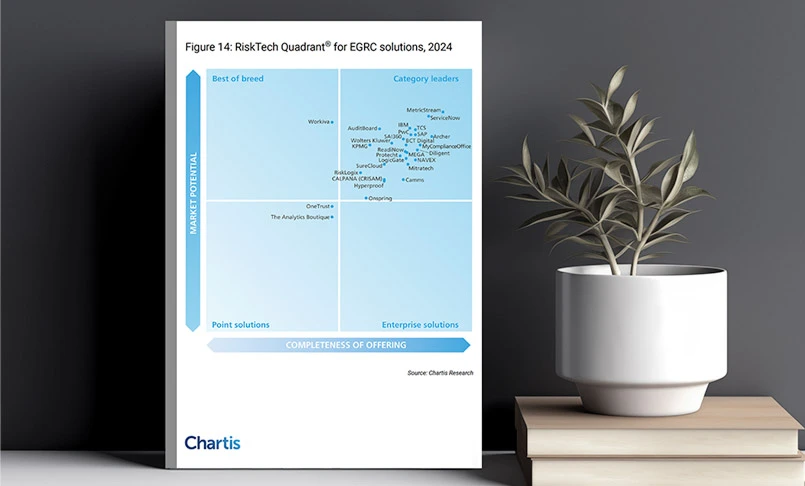Introduction
In an increasingly volatile and competitive business environment, organizations must anticipate and prepare for disruptions that could hinder their operations. A business impact assessment (BIA) is an essential tool for identifying and evaluating the potential effects of unforeseen events on a company’s critical operations, finances, and reputation. By conducting a BIA, organizations can develop strategies to minimize downtime, reduce losses, and enhance their resilience against risks.
This blog will explore the concept of a BIA, its importance, and the steps required to perform it effectively. We will also discuss its components, provide real-world examples, and address common challenges organizations face during the process.
Key Takeaways
- A business impact assessment (BIA) is a systematic process to evaluate the potential consequences of disruptions on organizational operations.
- BIAs are critical for identifying dependencies, prioritizing business functions, and ensuring effective risk mitigation strategies.
- Key components of a BIA include defining scope, identifying critical processes, and assessing financial and operational impacts.
- Conducting a BIA involves several steps: planning, data collection, analysis, and reporting.
- Challenges such as inadequate stakeholder involvement or insufficient data can hinder the effectiveness of a BIA, but these can be mitigated with proper planning and communication.
What is a Business Impact Assessment (BIA)?
A business impact assessment is a structured process used to determine the potential effects of disruptions, such as natural disasters, cyberattacks, or supply chain failures. The BIA helps to:
- Identify critical business functions and processes.
- Assess the impact of interruptions on financial, operational, and reputational aspects.
- Define recovery priorities and establish acceptable recovery timeframes.
A BIA serves as a cornerstone of business continuity planning (BCP) and disaster recovery (DR) efforts. It equips organizations with actionable insights to allocate resources effectively, minimize losses, and sustain essential operations both during and after a crisis.
Examples of Business Impact Assessments
To better understand the application of a BIA, consider the following examples:
- Healthcare Sector: A hospital conducts a BIA to identify critical services, such as emergency care, surgeries, and patient record systems. The assessment reveals that interruptions in power supply could jeopardize patient safety. As a result, the hospital invests in backup generators and implements robust data recovery protocols.
- Retail Industry: A large e-commerce company performs a BIA to evaluate the impact of website downtime on sales and customer trust. The assessment highlights the need for redundant server systems to maintain continuous operations during high-traffic events, such as Black Friday sales. The company is subsequently better prepared to handle high traffic events.
- Manufacturing: A factory assesses the consequences of supply chain disruptions on production schedules. The BIA identifies alternate suppliers and stockpiling strategies to mitigate risks thereby enabling smooth operations.
These examples demonstrate how BIAs help organizations recognize vulnerabilities and take proactive measures to ensure resilience.
Why is a BIA Important for Organizations?
A Business Impact Analysis (BIA) is crucial for organizations as it identifies potential risks and their impacts, prioritizes critical processes, guides efficient resource allocation, and informs recovery planning. It also ensures regulatory compliance and builds stakeholder confidence by demonstrating operational preparedness.
A BIA offers several benefits, making it indispensable for organizations striving to achieve operational resilience:
- Risk Identification: The BIA identifies potential risks and their associated impacts, enabling businesses to address vulnerabilities proactively.
- Resource Allocation: By prioritizing critical processes, organizations can allocate resources more efficiently to areas with the highest potential impact.
- Improved Recovery Planning: A BIA helps define acceptable downtime and recovery time objectives (RTOs), ensuring continuity plans are tailored to business needs.
- Regulatory Compliance Many industries require BIAs as part of compliance with regulations and standards, such as ISO 22301 for business continuity management.
- Stakeholder Confidence Demonstrating preparedness through a BIA enhances trust among customers, investors, and partners.
Key Components of a Business Impact Assessment
A comprehensive business impact assessment process typically includes the following components:
- Define the Scope: Clearly define the boundaries of the assessment, including the departments, processes, and systems to be evaluated.
- Identify Critical Processes: Determine which business functions are essential for organizational continuity and prioritize them based on their importance.
- Assess Financial Impacts: Evaluate the monetary consequences of interruptions, such as lost revenue, increased operational costs, and penalties.
- Evaluate Operational Impacts: Analyze how disruptions affect productivity, customer service, and compliance with legal or regulatory requirements.
- Set Recovery Objectives: Establish recovery time objectives (RTOs) and recovery point objectives (RPOs) for critical processes.
- Document Findings: Compile the results into a comprehensive report to guide decision-making and strategy development.
Steps to Conduct an Effective Business Impact Assessment
Performing a business impact assessment involves a systematic approach, typically encompassing the following steps:
- Planning and Preparation
- Define the scope and objectives of the BIA.
- Assemble a cross-functional team with representatives from key departments. Develop a project plan outlining timelines, responsibilities, and deliverables.
- Data Collection
- Conduct interviews, surveys, and workshops with stakeholders to gather information on critical processes, dependencies, and potential impacts.
- Review existing documentation, such as process maps and financial records.
- Impact Analysis
- Quantify the financial, operational, and reputational consequences of disruptions
- Assess the interdependencies between functions and systems.
- Prioritization
- Rank business functions based on their criticality and the severity of potential impacts.
- Establish recovery priorities and acceptable downtime thresholds.
- Reporting and Recommendations
- Compile findings into a detailed report that includes impact assessments, recovery objectives, and recommendations.
- Present the report to senior management for approval and integration into continuity plans.
- Review and Update
- Regularly review and update the BIA to reflect changes in business operations, technologies, or risks.
Common Challenges in Conducting a BIA and How to Overcome Them
Despite its importance, conducting a BIA can be challenging. Below are common obstacles and strategies to address them:
Lack of Stakeholder Engagement: Limited participation from key stakeholders can lead to incomplete or inaccurate assessments.
Solution: Secure executive support and communicate the BIA's importance to all involved parties. Foster collaboration through regular meetings and updates.
Insufficient Data: Inadequate or outdated information can hinder impact analysis.
Solution: Use multiple data collection methods, such as interviews, surveys, and document reviews, to ensure comprehensive coverage.
Complex Interdependencies: Identifying and analyzing dependencies between processes and systems can be difficult.
Solution: Employ tools such as process mapping and dependency diagrams to visualize interconnections.
Time and Resource Constraints: Limited time or resources may lead to rushed or incomplete assessments.
Solution: Prioritize critical processes and adopt a phased approach to conduct the BIA.
Resistance to Change: Employees may be resistant to the findings and recommendations of a BIA.
Solution: Engage stakeholders early, address concerns transparently, and demonstrate the value of preparedness.
Why MetricStream?
A business impact assessment is a powerful tool for organizations to prepare for and mitigate the effects of disruptions. By identifying critical processes, assessing potential impacts, and prioritizing recovery efforts, a BIA empowers businesses to build resilience and maintain operational continuity.
With a tool like MetricStream’s Business Continuity Management software, organizations can be prepared to create, implement, and manage a robust business continuity program that can aid them in achieving their goals in an uninterrupted manner.
MetricStream’s Business GRC helps you effectively manage enterprise risks, streamline regulatory compliance management, improve assurance and financial controls and effeciently manage third and fourth party risks.
To know more, request a personalized demo.
Frequently Asked Questions (FAQ)
What are the three stages of business impact assessment?
The three stages are data collection, impact analysis, and reporting, which collectively help assess potential disruptions and their effects on critical operations.
What are the five elements of BIA?
The five elements include defining scope, identifying critical processes, evaluating financial impacts, assessing operational impacts, and setting recovery objectives.
What is included in a BIA?
A BIA includes an analysis of critical functions, potential impacts of disruptions, recovery priorities, and recommendations for mitigating risks and enhancing resilience.
In an increasingly volatile and competitive business environment, organizations must anticipate and prepare for disruptions that could hinder their operations. A business impact assessment (BIA) is an essential tool for identifying and evaluating the potential effects of unforeseen events on a company’s critical operations, finances, and reputation. By conducting a BIA, organizations can develop strategies to minimize downtime, reduce losses, and enhance their resilience against risks.
This blog will explore the concept of a BIA, its importance, and the steps required to perform it effectively. We will also discuss its components, provide real-world examples, and address common challenges organizations face during the process.
- A business impact assessment (BIA) is a systematic process to evaluate the potential consequences of disruptions on organizational operations.
- BIAs are critical for identifying dependencies, prioritizing business functions, and ensuring effective risk mitigation strategies.
- Key components of a BIA include defining scope, identifying critical processes, and assessing financial and operational impacts.
- Conducting a BIA involves several steps: planning, data collection, analysis, and reporting.
- Challenges such as inadequate stakeholder involvement or insufficient data can hinder the effectiveness of a BIA, but these can be mitigated with proper planning and communication.
A business impact assessment is a structured process used to determine the potential effects of disruptions, such as natural disasters, cyberattacks, or supply chain failures. The BIA helps to:
- Identify critical business functions and processes.
- Assess the impact of interruptions on financial, operational, and reputational aspects.
- Define recovery priorities and establish acceptable recovery timeframes.
A BIA serves as a cornerstone of business continuity planning (BCP) and disaster recovery (DR) efforts. It equips organizations with actionable insights to allocate resources effectively, minimize losses, and sustain essential operations both during and after a crisis.
To better understand the application of a BIA, consider the following examples:
- Healthcare Sector: A hospital conducts a BIA to identify critical services, such as emergency care, surgeries, and patient record systems. The assessment reveals that interruptions in power supply could jeopardize patient safety. As a result, the hospital invests in backup generators and implements robust data recovery protocols.
- Retail Industry: A large e-commerce company performs a BIA to evaluate the impact of website downtime on sales and customer trust. The assessment highlights the need for redundant server systems to maintain continuous operations during high-traffic events, such as Black Friday sales. The company is subsequently better prepared to handle high traffic events.
- Manufacturing: A factory assesses the consequences of supply chain disruptions on production schedules. The BIA identifies alternate suppliers and stockpiling strategies to mitigate risks thereby enabling smooth operations.
These examples demonstrate how BIAs help organizations recognize vulnerabilities and take proactive measures to ensure resilience.
A Business Impact Analysis (BIA) is crucial for organizations as it identifies potential risks and their impacts, prioritizes critical processes, guides efficient resource allocation, and informs recovery planning. It also ensures regulatory compliance and builds stakeholder confidence by demonstrating operational preparedness.
A BIA offers several benefits, making it indispensable for organizations striving to achieve operational resilience:
- Risk Identification: The BIA identifies potential risks and their associated impacts, enabling businesses to address vulnerabilities proactively.
- Resource Allocation: By prioritizing critical processes, organizations can allocate resources more efficiently to areas with the highest potential impact.
- Improved Recovery Planning: A BIA helps define acceptable downtime and recovery time objectives (RTOs), ensuring continuity plans are tailored to business needs.
- Regulatory Compliance Many industries require BIAs as part of compliance with regulations and standards, such as ISO 22301 for business continuity management.
- Stakeholder Confidence Demonstrating preparedness through a BIA enhances trust among customers, investors, and partners.
A comprehensive business impact assessment process typically includes the following components:
- Define the Scope: Clearly define the boundaries of the assessment, including the departments, processes, and systems to be evaluated.
- Identify Critical Processes: Determine which business functions are essential for organizational continuity and prioritize them based on their importance.
- Assess Financial Impacts: Evaluate the monetary consequences of interruptions, such as lost revenue, increased operational costs, and penalties.
- Evaluate Operational Impacts: Analyze how disruptions affect productivity, customer service, and compliance with legal or regulatory requirements.
- Set Recovery Objectives: Establish recovery time objectives (RTOs) and recovery point objectives (RPOs) for critical processes.
- Document Findings: Compile the results into a comprehensive report to guide decision-making and strategy development.
Performing a business impact assessment involves a systematic approach, typically encompassing the following steps:
- Planning and Preparation
- Define the scope and objectives of the BIA.
- Assemble a cross-functional team with representatives from key departments. Develop a project plan outlining timelines, responsibilities, and deliverables.
- Data Collection
- Conduct interviews, surveys, and workshops with stakeholders to gather information on critical processes, dependencies, and potential impacts.
- Review existing documentation, such as process maps and financial records.
- Impact Analysis
- Quantify the financial, operational, and reputational consequences of disruptions
- Assess the interdependencies between functions and systems.
- Prioritization
- Rank business functions based on their criticality and the severity of potential impacts.
- Establish recovery priorities and acceptable downtime thresholds.
- Reporting and Recommendations
- Compile findings into a detailed report that includes impact assessments, recovery objectives, and recommendations.
- Present the report to senior management for approval and integration into continuity plans.
- Review and Update
- Regularly review and update the BIA to reflect changes in business operations, technologies, or risks.
Despite its importance, conducting a BIA can be challenging. Below are common obstacles and strategies to address them:
Lack of Stakeholder Engagement: Limited participation from key stakeholders can lead to incomplete or inaccurate assessments.
Solution: Secure executive support and communicate the BIA's importance to all involved parties. Foster collaboration through regular meetings and updates.
Insufficient Data: Inadequate or outdated information can hinder impact analysis.
Solution: Use multiple data collection methods, such as interviews, surveys, and document reviews, to ensure comprehensive coverage.
Complex Interdependencies: Identifying and analyzing dependencies between processes and systems can be difficult.
Solution: Employ tools such as process mapping and dependency diagrams to visualize interconnections.
Time and Resource Constraints: Limited time or resources may lead to rushed or incomplete assessments.
Solution: Prioritize critical processes and adopt a phased approach to conduct the BIA.
Resistance to Change: Employees may be resistant to the findings and recommendations of a BIA.
Solution: Engage stakeholders early, address concerns transparently, and demonstrate the value of preparedness.
A business impact assessment is a powerful tool for organizations to prepare for and mitigate the effects of disruptions. By identifying critical processes, assessing potential impacts, and prioritizing recovery efforts, a BIA empowers businesses to build resilience and maintain operational continuity.
With a tool like MetricStream’s Business Continuity Management software, organizations can be prepared to create, implement, and manage a robust business continuity program that can aid them in achieving their goals in an uninterrupted manner.
MetricStream’s Business GRC helps you effectively manage enterprise risks, streamline regulatory compliance management, improve assurance and financial controls and effeciently manage third and fourth party risks.
To know more, request a personalized demo.
What are the three stages of business impact assessment?
The three stages are data collection, impact analysis, and reporting, which collectively help assess potential disruptions and their effects on critical operations.
What are the five elements of BIA?
The five elements include defining scope, identifying critical processes, evaluating financial impacts, assessing operational impacts, and setting recovery objectives.
What is included in a BIA?
A BIA includes an analysis of critical functions, potential impacts of disruptions, recovery priorities, and recommendations for mitigating risks and enhancing resilience.








